Solar eclipse of January 16, 1972
An annular solar eclipse occurred on January 16, 1972. A solar eclipse occurs when the Moon passes between Earth and the Sun, thereby totally or partly obscuring the image of the Sun for a viewer on Earth. An annular solar eclipse occurs when the Moon's apparent diameter is smaller than the Sun's, blocking most of the Sun's light and causing the Sun to look like an annulus (ring). An annular eclipse appears as a partial eclipse over a region of the Earth thousands of kilometres wide.
| Solar eclipse of January 16, 1972 | |
|---|---|
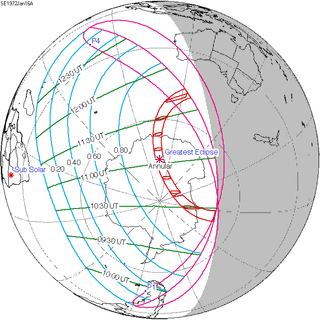 Map | |
| Type of eclipse | |
| Nature | Annular |
| Gamma | -0.9365 |
| Magnitude | 0.9692 |
| Maximum eclipse | |
| Duration | 113 sec (1 m 53 s) |
| Coordinates | 74.9°S 107.7°E |
| Max. width of band | 321 km (199 mi) |
| Times (UTC) | |
| Greatest eclipse | 11:03:22 |
| References | |
| Saros | 121 (58 of 71) |
| Catalog # (SE5000) | 9447 |
The areas included were the whole of Antarctica, a part of the southernmost portion of South America much of it in Argentina and a smaller part of Chile, much of it in the region of Patagonia, also it included New Amsterdam and the southern islands of the Indian Ocean,. The annular eclipse took place in western, southern and eastern Antarctica with its greatest eclipse in the eastcentral portion of the continent near the 75th parallel. The eclipse's edges were in Réunion and Mauritius, the eclipse was close to the island of Madagascar. The subsolar portion was in northcentral South West Africa (now Namibia).
Related eclipses
Solar eclipses of 1971–1974
This eclipse is a member of a semester series. An eclipse in a semester series of solar eclipses repeats approximately every 177 days and 4 hours (a semester) at alternating nodes of the Moon's orbit.[1]
Note: Partial solar eclipses on February 25, 1971 and August 20, 1971 occur in the next lunar year set.
| Solar eclipse series sets from 1971–1974 | ||||
|---|---|---|---|---|
| Descending node | Ascending node | |||
| Saros | Map | Saros | Map | |
| 116 | 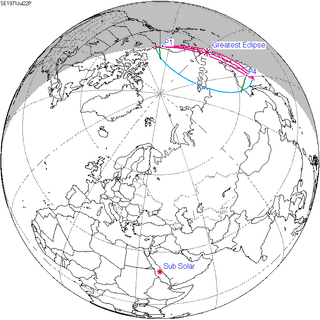 1971 July 22 Partial |
121 |  1972 January 16 Annular | |
| 126 | 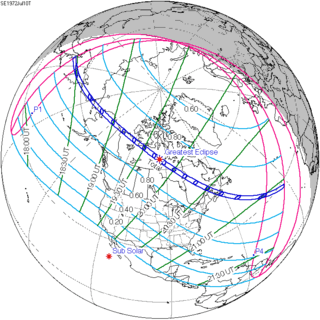 1972 July 10 Total |
131 | 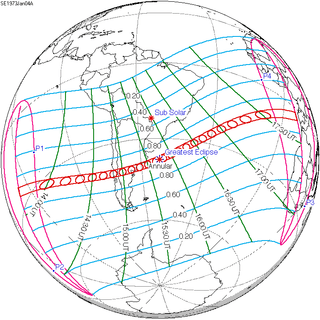 1973 January 4 Annular | |
| 136 | 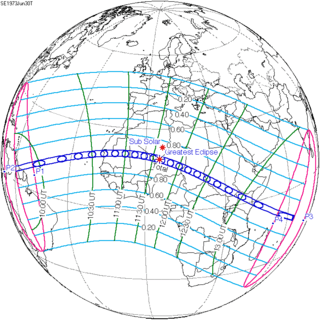 1973 June 30 Total |
141 | 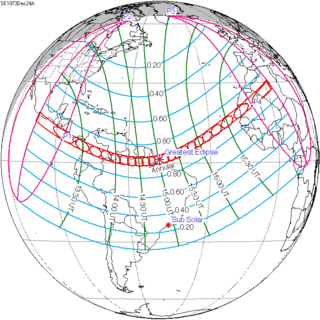 1973 December 24 Annular | |
| 146 | 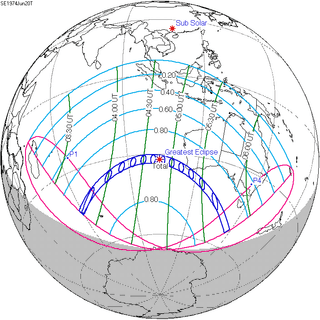 1974 June 20 Total |
151 |  1974 December 13 Partial | |
Saros 121
Solar saros 121, repeating every about 18 years, 11 days, and 8 hours, contains 71 events. The series started with a partial solar eclipse on April 25, 944. It contains total eclipses from July 10, 1070, to October 9, 1809. It contains hybrid eclipses on October 20, 1827, and October 30, 1845. It contains annular eclipses from November 11, 1863, to February 28, 2044. The series ends at member 71 as a partial eclipse on June 7, 2206. The longest total eclipse occurred on June 21, 1629, with greatest duration of totality at 6 minutes and 20 seconds. The longest annular eclipse will occur on February 28, 2044, with greatest duration of annularity at 2 minutes and 27 seconds.[2]
| Series members 49–65 occur between 1801 and 2100: | ||
|---|---|---|
| 49 | 50 | 51 |
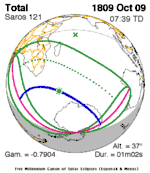 October 9, 1809 |
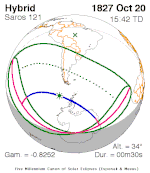 October 20, 1827 |
 October 30, 1845 |
| 52 | 53 | 54 |
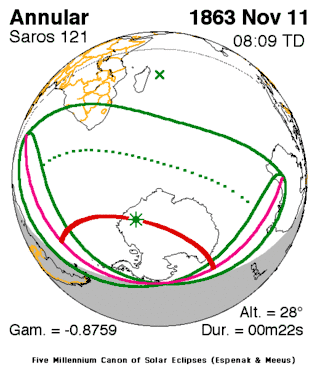 November 11, 1863 |
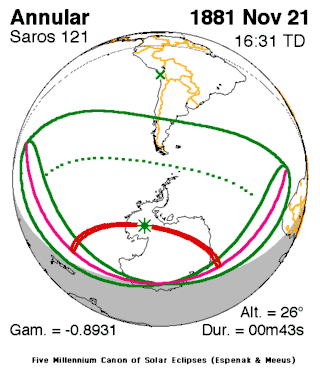 November 21, 1881 |
 December 3, 1899 |
| 55 | 56 | 57 |
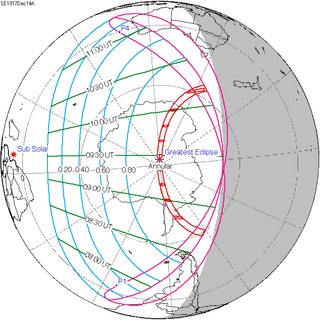 December 14, 1917 |
 December 25, 1935 |
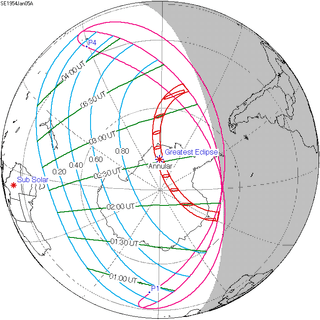 January 5, 1954 |
| 58 | 59 | 60 |
 January 16, 1972 |
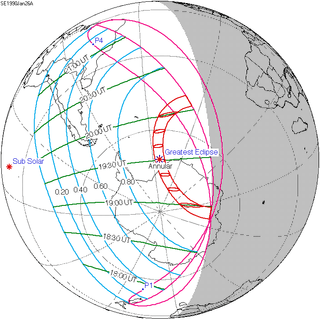 January 26, 1990 |
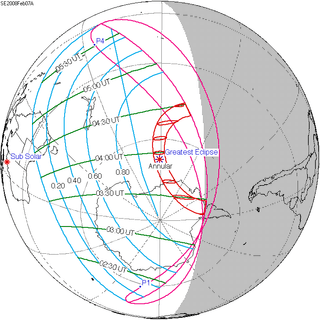 February 7, 2008 |
| 61 | 62 | 63 |
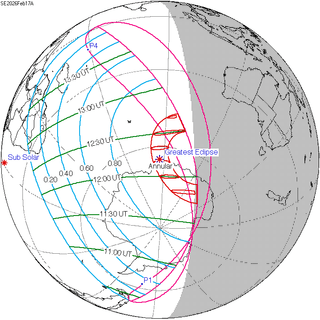 February 17, 2026 |
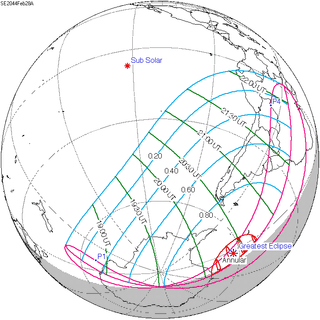 February 28, 2044 |
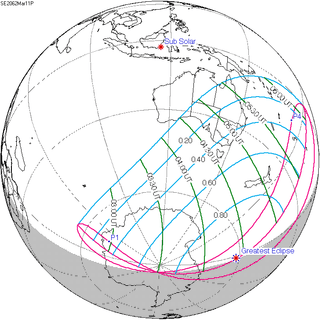 March 11, 2062 |
| 64 | 65 | |
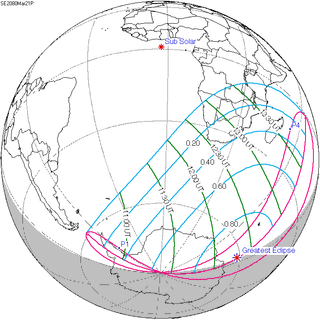 March 21, 2080 |
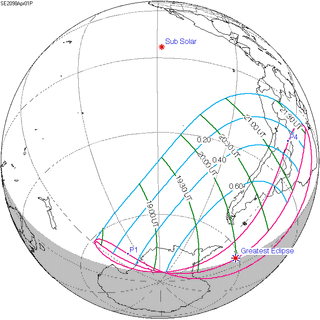 April 1, 2098 | |
Metonic series
The metonic series repeats eclipses every 19 years (6939.69 days), lasting about 5 cycles. Eclipses occur in nearly the same calendar date. In addition, the octon subseries repeats 1/5 of that or every 3.8 years (1387.94 days). All eclipses in this table occur at the Moon's ascending node.
| 21 eclipse events, progressing from south to north between June 10, 1964, and August 21, 2036 | ||||
|---|---|---|---|---|
| June 10–11 | March 27–29 | January 15–16 | November 3 | August 21–22 |
| 117 | 119 | 121 | 123 | 125 |
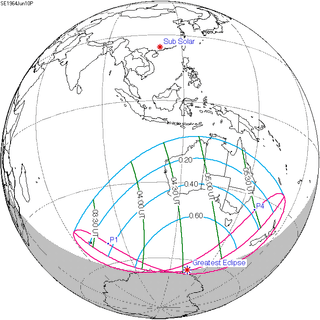 June 10, 1964 |
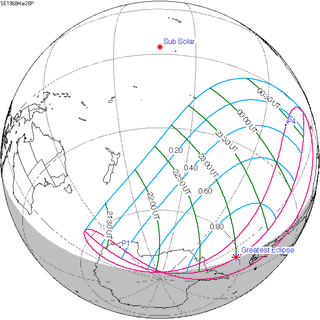 March 28, 1968 |
 January 16, 1972 |
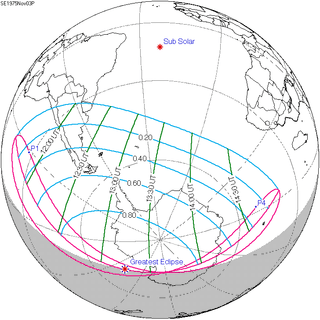 November 3, 1975 |
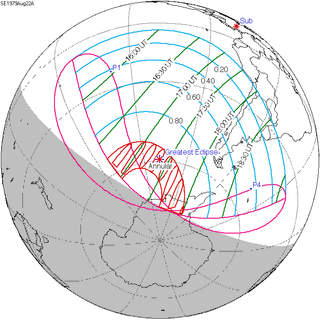 August 22, 1979 |
| 127 | 129 | 131 | 133 | 135 |
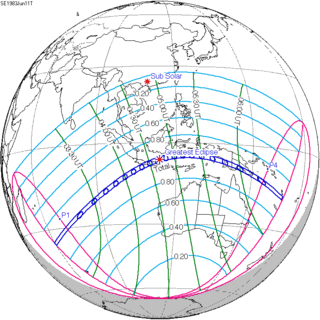 June 11, 1983 |
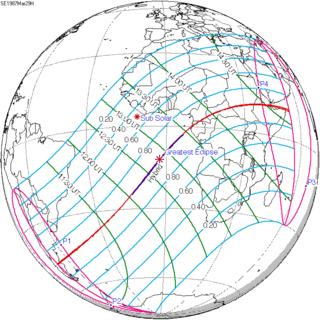 March 29, 1987 |
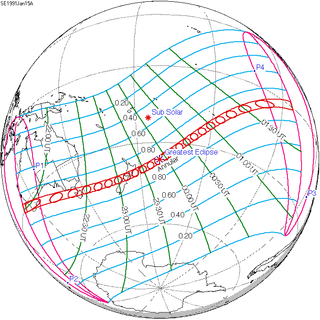 January 15, 1991 |
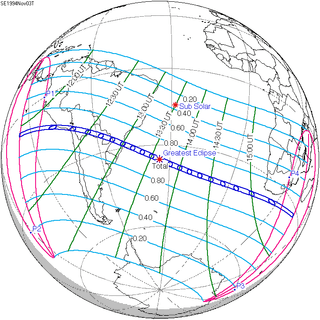 November 3, 1994 |
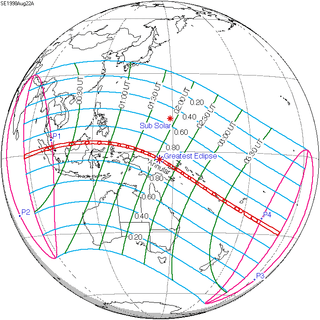 August 22, 1998 |
| 137 | 139 | 141 | 143 | 145 |
 June 10, 2002 |
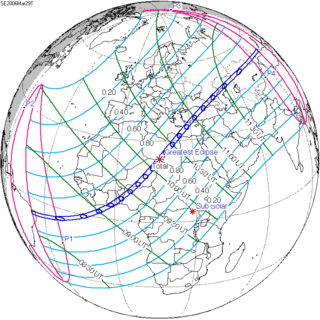 March 29, 2006 |
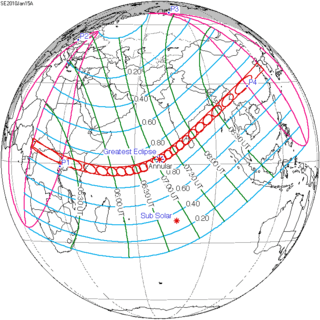 January 15, 2010 |
 November 3, 2013 |
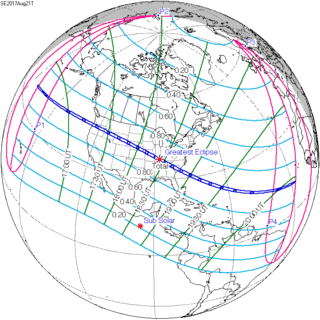 August 21, 2017 |
| 147 | 149 | 151 | 153 | 155 |
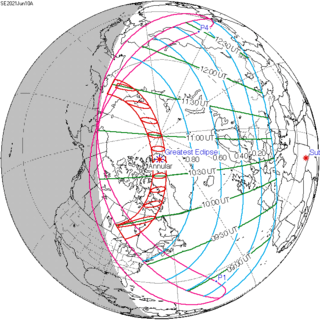 June 10, 2021 |
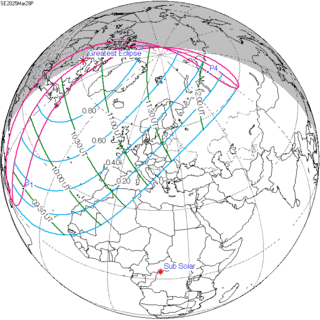 March 29, 2025 |
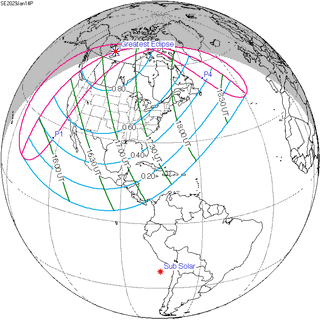 January 14, 2029 |
 November 3, 2032 |
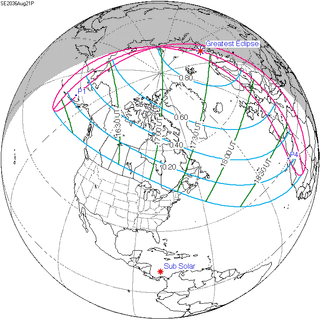 August 21, 2036 |
Notes
- van Gent, R.H. "Solar- and Lunar-Eclipse Predictions from Antiquity to the Present". A Catalogue of Eclipse Cycles. Utrecht University. Retrieved 6 October 2018.
- Saros Series Catalog of Solar Eclipses NASA Eclipse Web Site.
References
- Earth visibility chart and eclipse statistics Eclipse Predictions by Fred Espenak, NASA/GSFC
.jpg)
